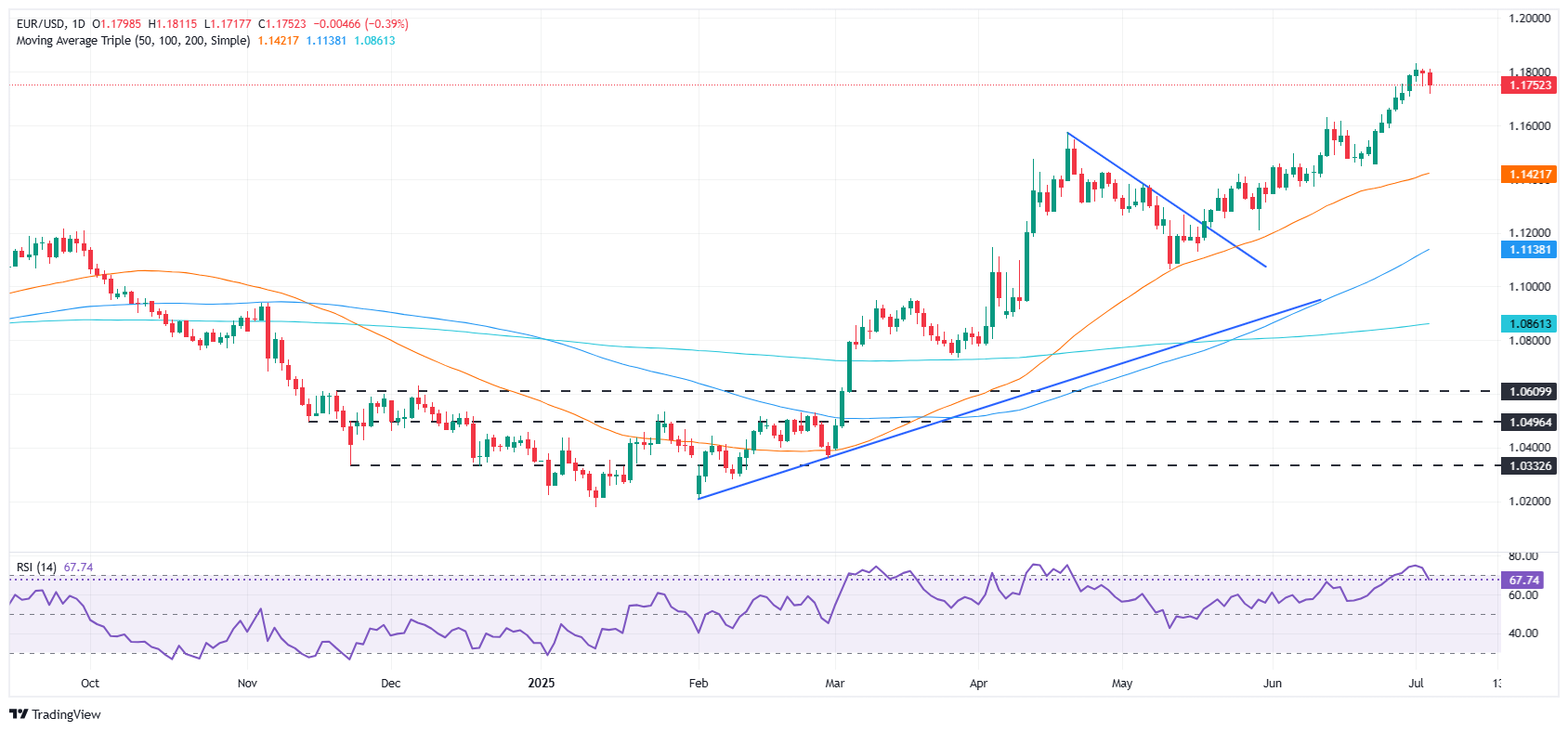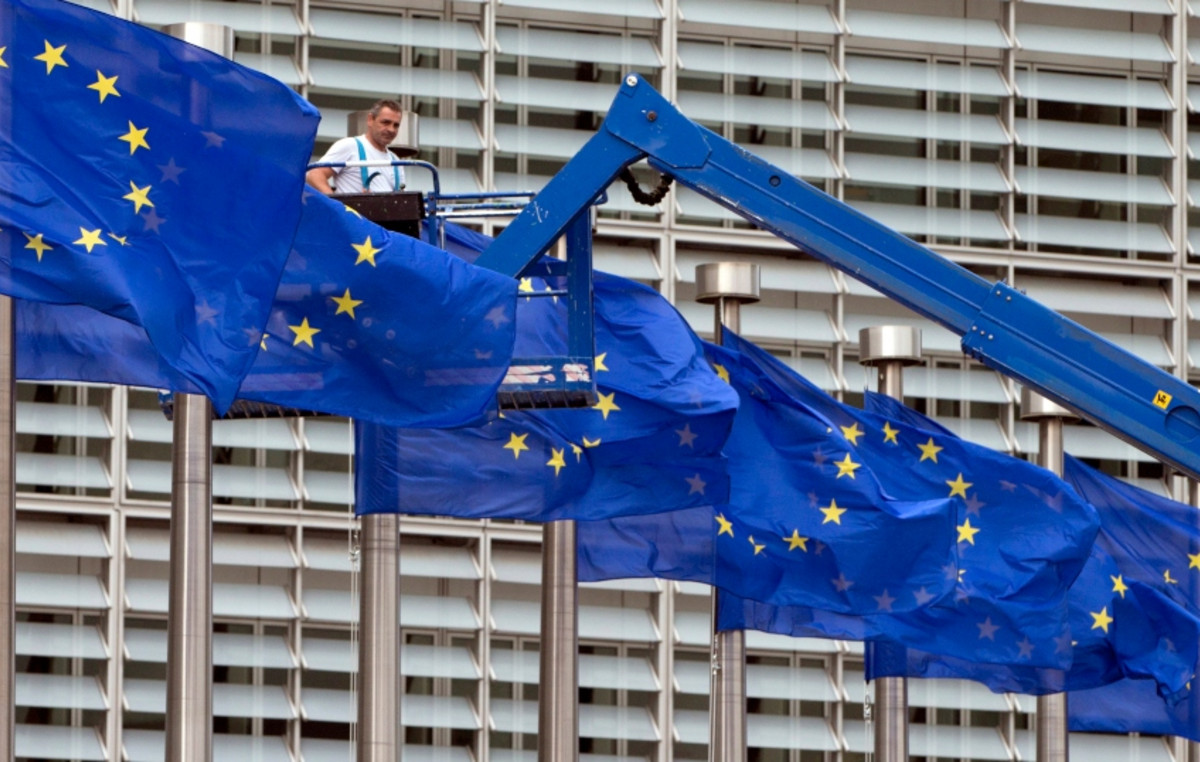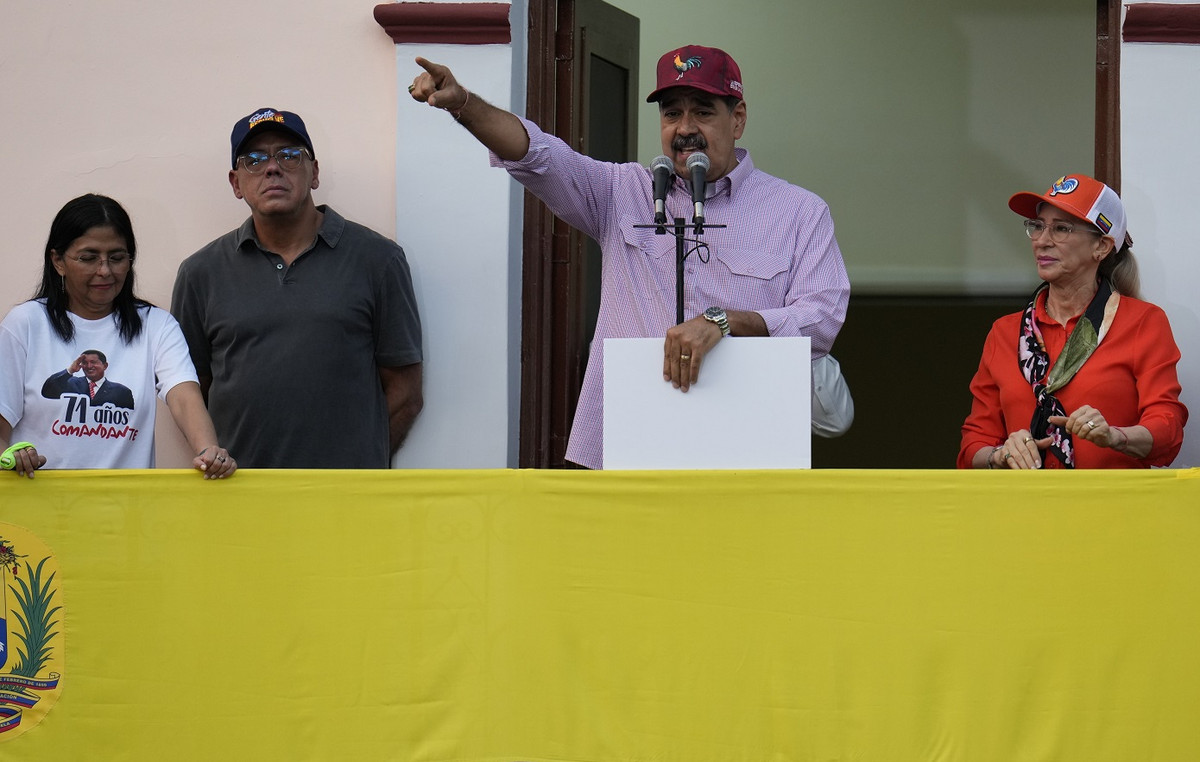- The EUR/USD falls below 1,1750 after the US NFP that exceeds estimates.
- The Fed waiting position will remain while the US economy adds more jobs than expected in June.
- The acts of the ECB show some resistance against the June rate cut decision.
The euro falls against the US dollar on Thursday after the publication of the employment figures of June in the United States (USA), which showed why the Federal Reserve (Fed) is not ready to reduce indebted costs. At the time of writing, the EUR/USD is quoted at 1,1744, with a 0.45%drop.
The non -agricultural payroll (NFP) report occupied the center of the stage on Thursday, since it fell in a week shortened in the US Day of Independence The data dismissed the hopes of the investors of a rate cut, exceeding the estimates and the number of May. Additional metrics showed that the unemployment rate fell and the average average earnings per hour remained stable.
Recently, last minute news revealed that the “One Big Beautiful Bill” of the US president, Donald Trump, has been approved by the US Congress and is expected to be signed on July 4 at 5:00 pm Est, according to the White House.
On the other side of the Atlantic, the HCOB Services PMIS in the European Union were revealed. The figures showed an improvement in economic perspectives, however, the PMI of services in Germany remained in contraction territory. The European Central Bank (ECB) published its last meeting minutes, which revealed that some policy managers wanted to keep interest rates without changes.
During the week, the operators will be attentive to the publication of factory orders in Germany, ECB speeches and the publication of the production price index (IPP) in the European Union.
Euro price this week
The lower table shows the percentage of euro change (EUR) compared to the main currencies this week. Euro was the strongest currency in front of the Japanese yen.
| USD | EUR | GBP | JPY | CAD | Aud | NZD | CHF | |
|---|---|---|---|---|---|---|---|---|
| USD | -0.18% | 0.46% | 0.43% | -0.81% | -0.51% | -0.21% | -0.39% | |
| EUR | 0.18% | 0.61% | 0.65% | -0.64% | -0.35% | -0.02% | -0.22% | |
| GBP | -0.46% | -0.61% | -0.16% | -1.24% | -0.97% | -0.64% | -0.82% | |
| JPY | -0.43% | -0.65% | 0.16% | -1.25% | -0.90% | -0.60% | -0.79% | |
| CAD | 0.81% | 0.64% | 1.24% | 1.25% | 0.25% | 0.60% | 0.42% | |
| Aud | 0.51% | 0.35% | 0.97% | 0.90% | -0.25% | 0.31% | 0.13% | |
| NZD | 0.21% | 0.02% | 0.64% | 0.60% | -0.60% | -0.31% | -0.18% | |
| CHF | 0.39% | 0.22% | 0.82% | 0.79% | -0.42% | -0.13% | 0.18% |
The heat map shows the percentage changes of the main currencies. The base currency is selected from the left column, while the contribution currency is selected in the upper row. For example, if you choose the euro of the left column and move along the horizontal line to the US dollar, the percentage change shown in the box will represent the EUR (base)/USD (quotation).
What moves the market today: the EUR/USD on the defensive after a strong NFP report
- June US NFP numbers showed that the economy added 147K people to the workforce, above the estimates of analysts of an increase of 110k and 144k jobs created in May. The unemployment rate fell from 4.2% to 4.1%
- The initial unemployment subsidy applications for the week that ended on June 28 fell to 233K, below the expected 240k and less than the reading of the previous week, pointing out a resistant labor market. Meanwhile, the ISM services PMI rose to 50.8 in June from 49.9 in May, indicating that the sector has returned to expansion territory.
- The president of the Atlanta Federal Reserve, Raphael Bostic, said it favors a waiting position in monetary policy due to uncertainty about economic policy. He added that price increases, related to tariffs, could cause a leap in inflation readings during the next year.
- According to Bloomberg, “President Donald Trump assured a radical change in US internal policy since the Chamber approved a fiscal package of 3.4 billion dollars that cuts taxes, reduces spending on social security programs and reverses much of Joe Biden’s efforts to move the country towards a clean energy economy.”
- The EU HCOB Services PMI in June improved from 50 to 50.5, a sign that business activity is improving. “This marks a prolonged period of relatively weak growth, and one that has never been overcome in duration throughout the 27 years of PMI data,” said Cyrus de la blonde, chief economist of the Hamburg Commercial Bank.
- The HCOB Services PMI in Germany improved from 49.4 to 49.7, but remained in contraction territory.
EURO TECHNICAL PERSPECTIVE: EUR/USD consolidates about 1,1750
The EUR/USD falls to a minimum of three days of 1,1716 but maintains its bullish bias. The Relative Force Index (RSI) left over the territory, activating a sales signal, and the sellers took advantage of this, carrying the exchange rate below 1,1800.
The fall of the torque could extend up to 1,1700, reaching 1,1631, the maximum of June 12. On the other hand, if the EUR/USD rises above 1,1800, the following key resistance areas are the annual peak in 1,1829, followed by 1,1850 and 1,1900.

EURO – FREQUENT QUESTIONS
The euro is the currency of the 19 countries of the European Union that belong to the Eurozone. It is the second most negotiated currency in the world, behind the US dollar. In 2022, it represented 31 % of all foreign exchange transactions, with an average daily business volume of more than 2.2 billion dollars a day. The EUR/USD is the most negotiated currency pair in the world, with an estimate of 30 %of all transactions, followed by the EUR/JPY (4 %), the EUR/GBP (3 %) and the EUR/AU (2 %).
The European Central Bank (ECB), based in Frankfurt (Germany), is the Eurozone reserve bank. The ECB establishes interest rates and manages monetary policy. The main mandate of the ECB is to maintain price stability, which means controlling inflation or stimulating growth. Its main tool is the rise or decrease in interest rates. Relatively high interest rates (or the expectation of higher types) usually benefit the euro and vice versa. The GOVERNMENT BOOK of the ECB makes decisions about monetary policy in meetings that are held eight times a year. The decisions are made by the directors of the National Banks of the Eurozone and six permanent members, including the president of the ECB, Christine Lagarde.
Eurozone inflation data, measured by the harmonized consumer prices index (IPCA), are an important economic indicator for the euro. If inflation increases more than expected, especially if it exceeds 2% of the ECB, it forces the ECB to rise interest rates to control it again. Relatively high interest rates compared to their counterparts usually benefit the euro, since they make the region more attractive as a place for global investors to deposit their money.
Published data measure the health of the economy and can have an impact on the euro. Indicators such as GDP, manufacturing and services PMIs, employment and consumer trust surveys can influence the direction of the single currency. A strong economy is good for the euro. Not only attracts more foreign investment, but it can encourage the ECB to raise interest rates, which will directly strengthen the euro. Otherwise, if economic data is weak, the euro is likely to fall. The economic data of the four largest economies in the euro zone (Germany, France, Italy and Spain) are especially significant, since they represent 75% of the economy of the euro area.
Another important fact that is published on the euro is the commercial balance. This indicator measures the difference between what a country earns with its exports and what you spend on imports during a given period. If a country produces highly demanded export products, its currency will gain value simply by the additional demand created by foreign buyers seeking to buy those goods. Therefore, a positive net trade balance strengthens a currency and vice versa in the case of a negative balance
Source: Fx Street
I am Joshua Winder, a senior-level journalist and editor at World Stock Market. I specialize in covering news related to the stock market and economic trends. With more than 8 years of experience in this field, I have become an expert in financial reporting.







